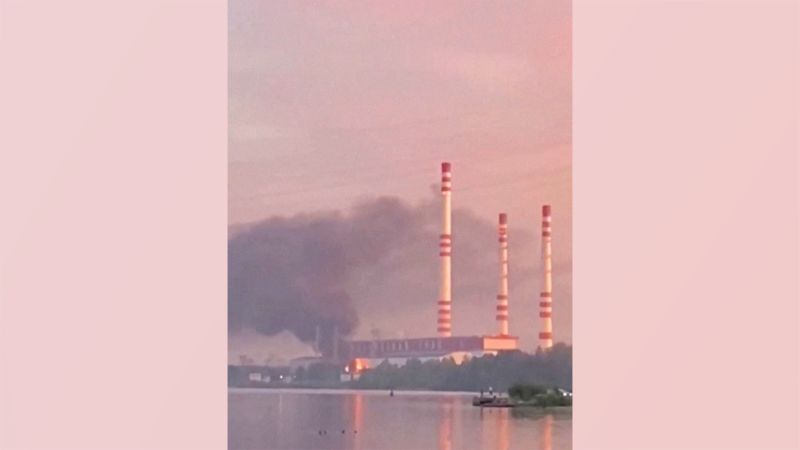The short videos show plumes of smoke rising from targets in Moscow and the neighboring Tver region.
The Russian Defense Ministry acknowledged the size of the Ukrainian attack, but downplayed its effectiveness, saying Sunday that 158 Ukrainian UAVs (unmanned aerial vehicles) “were destroyed and intercepted by on-duty air defense” overnight in 15 regions, including over the capital.
Moscow Mayor Sergey Sobyanin said two drones were shot down in the area of the Moscow Oil Refinery. No casualties were reported, but the second downed drone damaged a technical building at the refinery and caused a fire, which the mayor said had been localized and did not affect the plant’s operation.
The Tver region’s governor, Igor Rudenya, said on social media that a fire caused by the drone attack on the Konakovo district has been extinguished and that gas and electricity services to the area were operating normally.
The Ukrainian drone strikes follow others in the past week, including one last Thursday that set fire to oil reservoirs at a refinery in the Rostov region of Russia, according to the Ukrainian Defense Ministry.
Ukrainian President Volodymyr Zelensky said the most recent drone assaults deep inside Russia were justified by Moscow’s repeated attacks on his country.
“Just in the past week, Russia has launched over 160 missiles of various types, 780 guided aerial bombs, and 400 strike UAVs of different kinds against our people,” Zelensky said in a post on X.
On Sunday, at least 41 people were injured following a Russian attack on civilian infrastructure in Kharkiv, Ukraine’s second-largest city, local authorities said.
“Russia is once again terrorizing Kharkiv, striking civilian infrastructure and the city itself,” Zelensky said on X, calling on allies to “give Ukraine everything it needs to defend itself.”
“It is entirely justified for Ukrainians to respond to Russian terror by any means necessary to stop it,” Zelensky said, reiterating his call for Western countries to lift restrictions on the use of long-range weapons, which have that prevented their use to hit targets inside Russia.
“This includes decisions to carry out long-range strikes on Russia’s missile launch sites, destroy Russian military logistics, and conduct joint efforts to shoot down missiles and drones – everything that will help us resist Russian evil,” Zelensky said.
Russia has repeatedly targeted Ukraine’s energy infrastructure with missile and drone attacks since its invasion.
Fired from mobile launchers, ATACMS have a range of up to 300 kilometers (186 miles) and can deploy single high-explosive warheads or up to 900 submunitions, according to the Missile Defense Project at the Center for Strategic and International Studies.
But a US official said many of Ukraine’s high-value targets in Russia are outside the range of ATACMS. Russia’s military has pulled its high-value military assets far away from the front lines, including the aircraft launching glide bombs that have wreaked havoc on Ukrainian targets.
Umerov has pushed back on the assessments, saying Ukraine has presented the US a list of targets they would use ATACMS to strike.
An analysis last month from a Washington-based think tank, the Institute for the Study of War (ISW), supported Ukrainian claims there are high-value targets inside Russia within range of ATAMCS.
ISW said it had identified 233 Russian targets – “large military bases, communications stations, logistics centers, repair facilities, fuel depots, ammunition warehouses, and permanent headquarters” – in range of ATACMS that are immobile assets, meaning Moscow cannot move them out of harm’s way.
And ISW said Ukraine would only need to use ATACMS to strike some of those targets to have a significant impact on Russia’s ability to fight on the front lines.
While it pushes for the US to lift the ATACMS restrictions, Ukraine has been developing new longer-range indigenous weapons.
Zelensky announced last month that his country has a new jet-powered drone that can strike deep into Russia.
He said the Palianytsia “missile-drone” had been used in combat for the first time and was much faster and more powerful than the country’s existing fleet of drones, according to Ukrainian state media.
The Ukrainian president said he wouldn’t give any more specific details on the Palianytsia. But he hailed the new weapon’s “long-range” capabilities, hinting that it may surpass the up to 1,500-kilometer (932 miles) range of Ukraine’s current drone fleet.



























